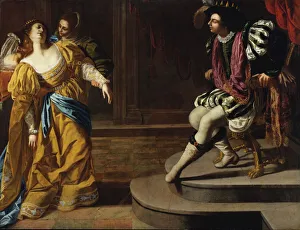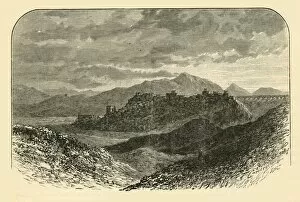Xerxes I Collection
Xerxes I, also known as Ahasuerus, was a powerful king of ancient Persia
All Professionally Made to Order for Quick Shipping
Xerxes I, also known as Ahasuerus, was a powerful king of ancient Persia. His reign is depicted in various artworks and historical artifacts that shed light on his life and the events surrounding him. One such artwork is "Esther before Ahasuerus" by Artemisia Gentileschi, displayed at the National Museum of Iran in Tehran. This painting portrays the biblical story of Esther pleading for her people's survival before King Ahasuerus. Another depiction can be found in the Procession of Xerxes frieze from ancient Iran. This frieze, also housed at the National Museum of Iran, showcases scenes from Xerxes' grand procession during his rule. The Persian Wars and Battle of Thermopylae are significant events associated with Xerxes I. An engraving from 1864 captures this historic battle where Xerxes faced off against Greek forces led by Leonidas I. The story of Esther and King Ahasuerus continues to inspire artists worldwide. In France, a stunning needlework piece called "Hanging" beautifully illustrates their tale. In another artwork titled "King Ahasuerus promising Esther he will grant anything she requests, " we witness their intimate conversation captured through a color lithograph print. A captivating oil painting by an unknown artist depicts Esther, Ahasuerus, and Haman in vivid detail. This masterpiece offers insight into their complex relationships during this tumultuous period. To understand the geographical context surrounding Xerxes' reign, a map of Ancient Greece becomes essential. It helps us visualize how his empire extended across vast territories during his rule. Visiting Persepolis allows one to witness firsthand the ruins of Xerxes' magnificent palace engraved forever in history's annals. Engravings offer glimpses into its former glory while igniting our imagination about life within its walls.






































